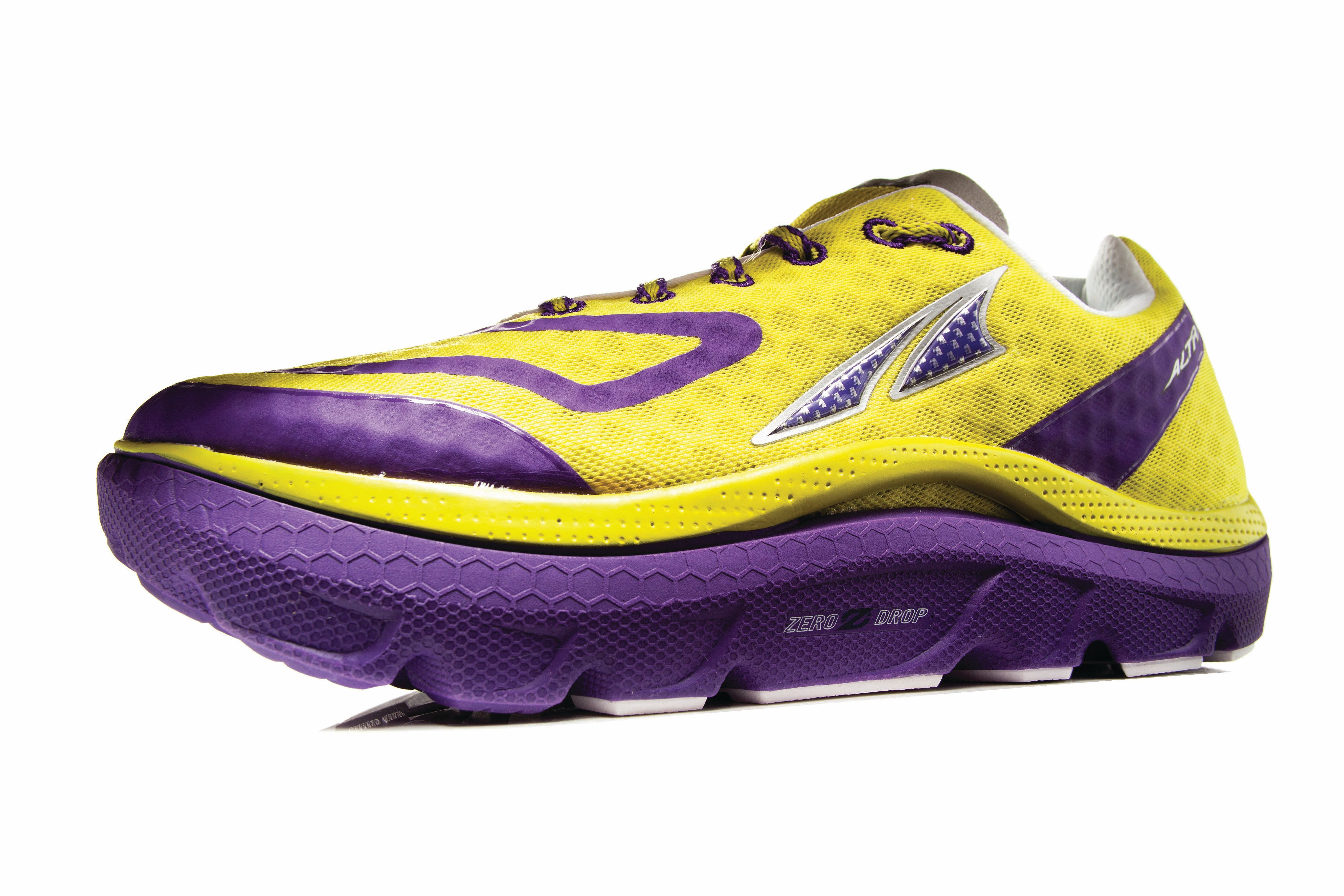Is The Maximalist Running Shoe Trend For You?

Altra Paradigm. Photo: John David Becker
Maximum cushioned, or “fat” shoes, are gaining momentum in all categories of running—from 5K to ultras, road to trail—and could be the next craze in triathlon too, where comfort on the run, marked by the sensation of “bike legs,” is even more critical.
The ultra-cushioned trend was spawned by shoe brand Hoka One One in 2010 as a full-pendulum-swing away from the waning minimalist craze. The company quickly enjoyed incredible success, especially with ultramarathoners. The industry took note, and soon there were many options. Hoka has since made a splash in road racing, and its new Clifton model, which was in our November issue shoe review, was the fastest and lightest version yet.
Max shoes boast roughly 25–35mm of heel stack height compared to the teens for typical road shoes, often with minimal drops from 0–5mm. Traditional shoes combine EVA (or similar) foam, an ultralight and highly compressible material, with stiffer, less cushy (but often heavier) foams and rubbers for added support, traction and durability. But max shoes, because their outsole is so much thicker, can rely on EVA-type padding exclusively, in the mid- and outsoles. This cuts weight considerably while also providing an incredibly soft (some say “cloud-like”) ride. While their aesthetic has been called clunky and clown-like, they often feel very light and quick underfoot.
But the maximalist movement is not for everyone. Detractors claim increased injuries—rolling ankles for instance, due to the higher profile—but the jury on this is still out. What is undeniable, though, is the shoe style’s massive rise in popularity and continued wear by a number of high-profile athletes, especially in the ultrarunning world.
RELATED: The Scoop On Maximalist Running Shoes
Altra Paradigm
$130, Altrarunning.com
9.1 oz
Heel 34mm
Toe 34mm
Although the company was originally born out of the minimalist movement, Altra has also embraced the max trend with its Paradigm. Aside from the thickest EVA midsole, two key features set this shoe apart: a wide, squared-off toebox (Altra’s trademark) that allows for natural toe splay, minimizing blisters and other common issues; and a zero-drop profile, meaning both toe and heel enjoy the full 34mm of plushness. At just over 9 ounces, it’s plenty light for racing, while still feeling supportive and durable enough for higher-mileage training. Altra says the zero-drop profile fosters a more natural forefoot landing, and we agree; heel strikers will also enjoy the massive landing pad but won’t feel the natural roll as much.
RELATED: How Often Should I Replace My Running Shoes?
Skechers Gorun Ultra
$80, Skechers.com
8.7 oz
Heel 27mm
Toe 24mm
A mere 80 bucks will get you into the Gorun Ultra. (Before you scoff, remember that Skechers won the 2014 Boston Marathon, so the company’s got some decent street cred.) And we found the Ultra a worthy fat shoe option for low- to mid-mileage training, especially for the mid-foot striker. If it’s plush you want, the 27mm of EVA heel cushioning felt the cushiest of all, despite the lowest height. At times, it was perhaps a little too much. Dual density padding—softer EVA in the mid- and a slightly firmer outsole, with protruding lugs all around—provides a super-soft landing, but also a slightly spongey, squirrely feel that runners looking for speed and rebound may not appreciate. Plus, these lugs, with no added rubber, will wear out quicker. But this shoe is extremely comfortable and very light, with a fun, bouncy feel. Did we mention the price?
RELATED: 8 Hot Running Shoe Trends For 2015
Brooks Glycerin 12
$150, Brooksrunning.com
10.9 oz
Heel 29mm
Toe 19mm
Despite its high heel stack, Brooks’ Glycerin offers the most traditional feel. While many of these shoes omit completely or cut drastically the amount of rubber on the outsole—softening the ride and lowering weight, but also cutting life span—Brooks chose a full layer of rubber. This, laid over a thick midsole of its DNA cushioning (the company’s alternative to EVA), makes the shoe’s ride more “normal” with a firmer, more stable landing but less of the cloud-like feel. It’s far softer than standard shoes, but you can still feel the road. And with über-soft heel cup and tongue material, and 3-D overlays in the upper, it’s outstandingly comfortable inside. It is a bit heavy, though, so if weight and speed trump comfort, it’s not the best option.